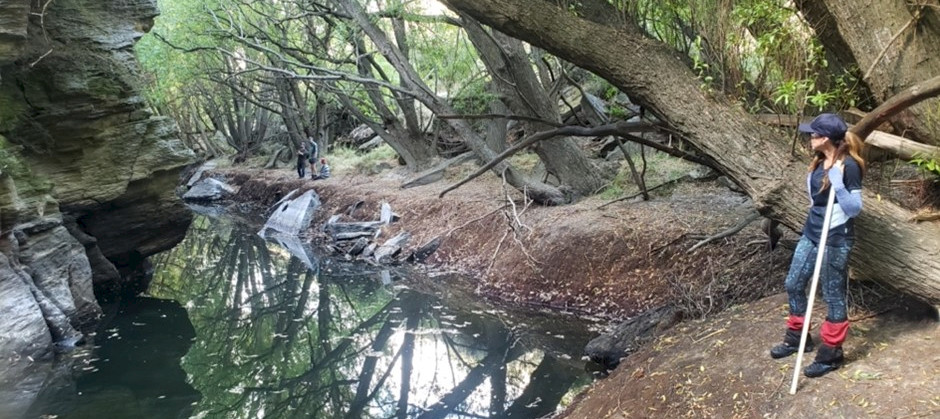Review and Mitigation Guidance - Willow Removal at Poolburn Gorge
Client
Ida Valley Catchment Group
Experts
Shelley McMurtrie, Alex James, Oliver Hall, Ariana Painter and Bronwyn Gay (EOS Ecology)
Ida Valley Catchment Group sought expert support in mitigating large amounts of willows spreading throughout Poolburn Gorge.
An issue for several decades, the willows have now reached a point where they are having adverse impacts on the Ida Burn. This has been increasing flood hazard risk, altering the natural channel morphology, impeding the natural movement of gravels, taking water from the stream through their extensive root systems, and preventing the growth of native riparian vegetation.
Ida Valley Catchment Group responded to the rapidly growing willows by developing a willow removal proposal. Expert advice was sought on the suitability of the proposal, the potential impacts removal might have on water quality and freshwater ecology, and recommendations of measures to reduce any potential adverse effects.
Through A2E, experts from EOS Ecology conducted a site visit to understand the influence the willows were having in the valley, reviewed the Willow Management and Removal Plan to identify any adverse effects, and made recommendations to reduce or avoid these effects.
The report made several recommendations, including:
- Staging of works over at least three years - avoids drastic change to 4km of stream all at once and provides the opportunity for adaptive management if necessary.
- Minimise the length of gorge where cutting and floating of logs downstream is required.
- Consider fish relocation where machinery is required to cross the stream. This will be crucial if the presence of the “threatened – nationally endangered” roundhead galaxias is confirmed within the gorge.
- Advise around sections where carrying out machinery removal is needed, and ensuring refuelling is well away from the stream.
- Removing woody debris in shorter periods of time, to minimise the risk of logs floating downstream and creating debris dams during flood events.
- Monitoring how much woody debris appears after floods and having a programme for removal.
- Bringing in a woodchipper to chip wood material, with the opportunity of creating planting mulch or wood for fundraising.
Beyond the proposal, EOS Ecology experts recommended a series of long-term actions required to permanently exclude willows. This included a native planting programme, weed control including spot spraying of willow regrowth, investigating willow control upstream of the gorge, and pest management.
EOS also facilitated a meeting to deliver draft guidance, discuss outcomes, and gather feedback from the Ida Valley Catchment Group.
Ida Valley Catchment Group now have a series of recommendations to help guide their willow removal programme.
Sam Stevens (Ida Valley Catchment Group) said that A2E’s support has exceed expectations.
“The EOS Ecology report and advice provided through A2E has been extremely helpful. It has ‘saved our bacon’ on a number of occasions when we have needed an ecological report for funding applications.”
Their expert advice went beyond what we thought they would get, and we have been referring back to this document constantly as we work through our next phases,” said Stevens.
Removal will be staged over a few years, with the first stage of willow spraying taking place in March 2024, and physical removal with machinery began in April 2025
Image: Shelley McMurtrie (EOS Ecology) with members of the Ida Valley Catchment Group during the site visit.

